These are the best laptops you can buy today
The best laptops help you switch seamlessly between productivity, creativity, and relaxation at a moment's notice. These portables have the processing chops to handle demanding applications, but not the bulky designs that make them inconvenient to carry around. We've reviewed and ranked the best low-end, mid-range, and high-end laptops across all the major manufacturers and operating systems to help you decide which one hits the perfect balance between budget and performance.
The 12 Best Laptops in 2020
- New Dell XPS 13 — Best Overall Laptop: A 16:10 Ultrabook that offers everything you need in an everyday laptop.
- Acer Spin 713 — Best Chromebook: Acer delivers unusually powerful specs for a Chrome OS device.
- HP Spectre x360 13 — Best Convertible Laptop: Its 4G LTE empowers you to stay productive anywhere.
- MacBook Air — Best Affordable Apple Laptop: You get a reliable OS, good battery life, and good performance.
- Lenovo Flex 5 — Best Budget Chromebook: You get reliably basic computing at an affordable price.
- Surface Laptop 3 — Best Premium Ultrabook: A 3:2, Instant On touchscreen and top-quality specs.
- Acer Swift 3 Ryzen 7 — Best Cheap Powerful Laptop: No other device in its price range hits the same power benchmarks.
- Asus ZenBook 13 UX325EA — Best Ultra-Slim Portable Laptop: Comes in at 0.55 inches thick, 2.5 pounds, and still gets speedy performance.
- Asus Chromebook C434 — Best Mid-Range Chromebook: A balanced device that offers just enough memory and a convenient backlit keyboard for long work hours.
- Razer Blade 15 — Best Gaming Laptop: You'll get superb Nvidia graphics and a surprisingly thin form factor .
- MacBook Pro 13 — Best Apple Laptop: An upgrade on the Air in display, mics, battery and ports.
- Lenovo Chromebook Duet — Best 2-in-1 Chromebook Tablet: Our lightest, thinnest and cheapest pick.
Our criteria for deciding the best laptops of 2020
You won't find many gaming laptops, mobile workstations, or 17-inch behemoths on our list of the "best" laptops. It goes without saying that if you spend two or three thousand dollars on a machine, it's going to outperform a Chromebook. We think that the best laptops work for students and professionals without hitting that mark, or at least start at a reasonable price, so the upgraded models stay at a reasonable price.
We've included four of the best Chromebooks, which simplify your computing experience compared to Windows 10 and usually offer excellent battery life and 2-in-1 designs. Versatility and portability is an important factor for most buyers, so half of our picks have convertible or 2-in-1 form factors, and all of our picks (minus our gaming laptop) weigh between 2 and 3.3 pounds and don't measure above 14 inches.
We'll highlight all of the usual and important specs like processors, graphics, and memory, but these often correlate pretty consistently with the price you're willing to pay. The intangibles we'll highlight here are those that will matter most to your day-to-day experience: the keyboard, trackpad, temperature and fan noise, color fidelity, internet connectivity, and so on. What you won't find much of are laptops with upgradeable components besides storage, or recommendations that you buy the 4K or OLED versions of laptops that burn through battery life much faster.
That being said, if you came here for the best of the best and just want our top recommendations with no fuss, choose the XPS 13 for sheer quality of performance, stylish display and functional features. Or, if Windows isn't your OS of choice, the excellent Acer Chromebook Spin 713 should check most students' and creatives' boxes at a lower price, while the MacBook Air is the best option for Apple fans that doesn't overcharge for quality.
Dell XPS 13
Best Overall Laptop
Bottom line: Each new generation of the XPS 13 only widens the gap between it and other laptops, and the latest 9310 gives you 11th Gen Intel processing, 91.5% screen-to-body ratio, Wi-Fi 6, improved integrated graphics, and more. It's a mid-range option that can easily run productivity and editing software, and even non-demanding PC games, at a lower cost than most comparable machines — though the 4K and touchscreen options raise the price.
Processor: Up to 11th Gen i7-1165G7 | Graphics: Intel® Iris® Xe Graphics Shared | RAM: Up to 16GB 4267MHz LPDDR4x | Storage: 512GB–2TB M.2 PCIe NVMe | Display size: 13.4" | Display resolution: FHD or UHD, 500 nits | Ports and slots: 2x Thunderbolt 4, 1x audio jack, 1x microSD | Weight: 2.8 lb | Convertible? 2-in-1 model available
| Performance | Hardware | Vendor |
|---|---|---|
| Varies | All configurations, 11th Gen Processor | From $979 at Dell |
| Mid-range | i7, 8GB RAM, 512GB SSD, FHD | $1250 from Best Buy |
| High-end | i7, 16GB RAM, 512GB SSD, UHD | $1650 at Best Buy |
Pros:
- Tiger Lake CPU and Iris Xe GPU
- 16:10 anti-reflective display with tiny bezels
- 500 nits and 90% DCI P3 with 1500:1 contrast
- Facial and fingerprint recognition log-in
- Outstanding audio
- Excellent keyboard and touchpad
Cons:
- Only two Thunderbolt ports, with no USB
- Battery life only average
Our colleagues at Windows Central named the Dell XPS 13 9300 the "perfect 13-inch Ultrabook," which may have been true until Dell pushed out the XPS 13 9310 with Tiger Lake CPUs that made an already fast machine even faster. Handling productivity software like Excel 2.5x faster and video editing software 1.54x faster, these Tiger Lake-powered Dells are somehow more perfect than before.
Very few laptops come close to the quality that the XPS 13 offers, so your only real debate is whether to buy the newest model for the speed boost and other minor upgrades or choose the 10th Generation CPU option at a discount.
Our reviewers loved the older 2020 laptop on its own merits. The form factor received the most praise, thanks to its tall 16:10 aspect ratio, razor-thin bezels, and redesigned keyboard with large backlit keys and good key travel. In the Geekbench 5.0 and PCMark 10 CPU benchmark tests, the XPS 13 beat our other best laptop picks: the Surface Laptop 3, HP Spectre x360, and an upgraded sibling of the Acer Swift 3. The 500 nits of brightness and excellent dual 2.5-watt speakers gave a one-two punch of stunning visuals and audio.
That said, there are perks to upgrading to the 9310. Specs-wise, the RAM speed jumps from 3733MHz to 4267MHz, and the SSD was swapped to the M.2 PCIe form factor. The DCI-P3 color gamut jumps to 90%, a useful improvement for photo and video editors that need color fidelity. If you have a Wi-Fi 6 router, only the 9310 can take full advantage of it. You'll also upgrade your two ports to Thunderbolt 4.
Shoppers who game in their spare time will seriously want to consider the 9310 because its upgraded Intel Xe GPU proves that integrated graphics don't have to be bad. According to leaked benchmarks, the Intel Xe wins a head-to-head showdown against the discrete 25W NVIDIA MX350 GPU, and can reportedly play current-gen titles like Borderlands 3 at 1080p, something the 9300 XPS 13 certainly can't do. It's not a gaming laptop by any stretch of the imagination, but it'll let you enjoy new games without spending an extra grand for a well-specced gaming laptop.
Neither laptop has legacy USB ports — you'll need some USB-C adapters — and the 52 Whr battery remained unchanged between the 9300 and 9310, leaving you with adequate but unremarkable battery life. Whichever you get your hands on, there are very few downsides to an XPS 13.
Best Overall Laptop
Dell XPS 13
An unmatched Ultrabook with a gorgeous display and the latest Intel processing, the Dell XPS 13 has few rivals.
Acer Chromebook Spin 713
Best Chromebook
Bottom line: Anyone who can find this model in stock has an absolute winner on their hands. The Acer Chromebook Spin 713 has frequently sold out in 2020 thanks to an affordable price matched with some of the most powerful specs you'll find with a Chrome OS device. As our only Chromebook pick with an HDMI port, 3:2 ratio, and i7 Intel processor, it's the best equipped for multi-display or multi-window productivity and for Stadia gaming.
Processor: Up to 10th Gen i7-10510U 1.80GHz | Graphics: Intel UHD Shared | RAM: 16GB DDR4 SDRAM | Storage: 128 GB SSD | Display size: 13.5" | Display resolution: 2256x1504 | Ports and slots: 1x HDMI, 1x USB-C, 3x USB | Weight: 3.20 lb | Auto Update Expiration date: June 2028 | Convertible? Yes
| Performance | Hardware | Vendor |
|---|---|---|
| Low-end | i5, 8GB RAM, 128 SSD, 2K | $629 from Best Buy |
| Varies | Multiple configurations | $849 at Walmart |
| Mid-range | i5, 16GB RAM, 128GB SSD | $985 at B&H |
Pros:
- Affordably priced for specs
- Consistent 10-hour battery life
- 2K IPS display
- HDMI and USB-C ports
- 10th Gen Intel i7
Cons:
- Down-facing speakers
- Noticeably warm fan
Most Chromebooks fundamentally lack much processing power, offering wimpy Mediatek processors, subbing in eMMC storage for SSDs, and falling short of the usual 8GB memory standard. Acer flouted those industry standards when it built the powerful Spin 713, which we gave 5 stars in our review. Part of Intel's Project Athena initiative to improve Chromebooks' reliability and power, the Spin 713 is essentially a poster child for how to meet those goals.
For starters, the entry-level 713 gives you three options between the 10th Gen Intel i3, i5, and i7 that are all within a couple hundred dollars in price, so upgrading to full power doesn't make you spend more than you should. Even at the lowest tier, you get 8GB of memory that will help it handle as many Chrome tabs at once as you need; and again, moving up to 16GB won't bankrupt you. Just note that all that extra processing power translates into a louder, warmer fan than most Chromebook users have to accept.
Best of all, in our weeks of testing, we found that even with brightness at max and making video calls, the battery life lasted us 6–8 hours. Most non-Chromebooks are lucky to hit that even when not using any intensive applications. While on the go, this laptop may be slightly heavier than other Chromebooks but needs that extra weight for its powerful components and strong battery to match.
Acer made room for an HDMI port, USB-C port, and three legacy USB ports, which outclasses most Chromebooks and Ultrabooks. While you'll need a USB-C monitor for most Chromebooks, this laptop makes it far simpler to link up to any external monitor to add screen space for your work or charge your various accessories.
While virtually any Chromebook can handle Stadia since the bulk of the game rendering is handled via the cloud, the Spin 713 remains one of the few that won't be overwhelmed by higher settings. And once Google succeeds in adding Steam support to its Chromebooks via Linux, the Spin 713 is far better equipped than our other Chromebook picks to play games past potato settings.
Why shouldn't you pick the Acer Chromebook Spin 713? If you want a true 2-in-1 detachable that's lighter for in-bed tablet streaming, for one. For another, our reviewer did note that the audio doesn't sound great when seated on your lap or bed thanks to the downward-facing speakers. And it does have decently sized bezels compared to some of our other top picks. These are fairly minor concerns, but we have some alternatives below if you want a lighter device with even better battery life.
Best Chromebook
Acer Chromebook Spin 713
Combining power, portability, and plenty of ports, the Acer Spin 713 is among the most versatile and affordable of our top picks.
HP Spectre x360 13
Best Convertible Laptop
Bottom line: More affordable for comparable specs than the XPS 13, the Spectre x360 is the best pound-for-pound competitor with our top pick. Along with some unique privacy features and 4G LTE support (with 5G on the way), the Spectre stands out for its convertible design and 90% screen-to-body ratio. Plus, it recently got an 11th Gen upgrade that simultaneously speeds up processing and improved its battery life.
Processor: 10th Gen Intel i7-1165G7 (Up to 4.7 GHz) | Graphics: Intel Iris Xe Graphics | RAM: 16 GB | Storage: 256GB–2TB PCIe NVMe M.2 SSD | Display size: 13.3" | Display resolution: FHD or UHD, 400 nits | Ports and slots: 2x Thunderbolt 4, 1x USB-A, 1x audio jack | Weight: 2.8 lb | Convertible? Yes
| Performance | Hardware | Vendor |
|---|---|---|
| Varies | All configurations | From $1150 at HP |
| Low-end | 4K, i5, 8GB RAM, 256GB SSD | $850 at Best Buy |
| Mid-range | FHD, i7, 8GB RAM, 256GB SSD | $1129 at Walmart |
| High-end | 4K, i7, 16GB RAM, 512GB SSD | $1600 at Best Buy |
Pros:
- Up to 11th Gen Intel with Xe integrated graphics
- Webcam kill switch and mic mute button
- Edge-to-edge keyboard with great key travel
- Improved precision touchpad
- 4G LTE support
- Cheaper than XPS 13 for approximate specs
Cons:
- Average tested battery life
- 16:9 aspect ratio
Only the Dell XPS 13 2-in-1, our pick for the best Dell laptop, comes close to matching the HP Spectre x360 13 as a convertible laptop. Yet, unlike our Windows Central colleagues, who rated Dell's laptop as the better convertible, we lean more towards selecting HP's device for this slot. Much of their comparison boils down to Dell's computer having access to 11th Gen processors, but HP added Intel's new chips in October, leveling the playing field.
Let's break down some significant differences between the two:
- Dell caps its 2-in-1 storage and memory at 512GB and 16GB, while HP lets you upgrade to 1 or 2TB with 32GB Intel Optane Memory
- An i7, 512GB, 16GB configuration will cost you several hundred dollars less with HP
- The Spectre has one USB-A port to Dell's zero
- HP's battery beats Dell's by 9 Wh
- While both offer Bluetooth 5 and Wi-Fi 6, only HP Spectre offers 4G LTE for remote cellular connectivity
- HP's keyboard has better key travel than Dell's, according to our reviewer
- Dell has a 16:10 ratio and thinner bezels
Outside of the last point about the display, the HP Spectre x360 stands above Dell's convertible in most areas. We did find that the XPS 13 2-in-1 did manage to outlast the HP Spectre x360 by about an hour in battery life, but HP did at least hit 8 or 9 hours in real-world tests; plus, HP has claimed that its 11th Gen model (which we haven't tested yet) has increased its battery life along with improving its performance.
As for the 11th Gen upgrade, the same improvements we mentioned with the XPS 13 apply here: an incremental improvement to the CPU for demanding applications, plus a major jump to gaming applications and simple productivity software. We can't report how noticeable this difference will be, though, as our review was of the 10th Gen variant.
The HP Spectre x360 13 is an excellent choice for a work laptop you can take anywhere. A dedicated webcam kill switch, mic mute button, and quick privacy screen dimmer all make it more secure and convenient for our new work-from-home Zoom culture. The keyboard is comfortable for long typing sessions. And the Bang & Olufsen dual speakers are some of the best we've heard from a laptop. If your only deal-breaker is the narrow 16:9 aspect ratio, you may want to look into the HP Spectre x360 14 and its 3:2 aspect ratio instead.
Best Convertible Laptop
HP Spectre x360 13
Inexpensive yet high-end, the Spectre x360 13 has few convertible rivals that stack up without costing a fortune.
MacBook Air (early 2020)
Best Affordable Apple Laptop
Bottom line: The 2020 MacBook Air mercifully replaced the frustrating butterfly keyboard with a workable scissor-switch keyboard and reliable 10th Gen chips — there are three valid options in the i3, i5, or i7 — but know going in that no upgrades will make it ready for demanding applications or gaming. It's no MacBook Pro, but it's also much more reasonably priced for most shoppers.
Processor: Up to 10th Gen Intel Core i7 (1.2GHz) | Graphics: Intel Iris Plus Graphics | RAM: Up to 16GB of 3733MHz LPDDR4X | Storage: 256GB–2TB PCIe-based SSD | Display size: 13.3" | Display resolution: 2560x1600 | Ports and slots: 2x Thunderbolt 3, 1x audio jack | Weight: 2.8 lb | Convertible? No
| Performance | Hardware | Vendor |
|---|---|---|
| Varies | All configurations | From $999 at Apple |
| Low-end | i3, 8GB RAM, 256GB SSD | $929 at Amazon |
| Mid-range | i5, 8GB RAM, 512GB SSD | $1300 at Best Buy |
Pros:
- Good price for an Apple device
- No more butterfly keyboard
- 10th Gen Intel chips
- Retina display
- Good battery life
- Thin form factor
Cons:
- Only two ports on one side
- Not built for editing software
- Low-res webcam with no Face ID
iMore chose the MacBook Air 2020 as best MacBook of 2020, using the same general criteria we're using for this list. While the Macbook Pro obviously has more power, the Air is thinner, lighter, and more affordable for demographics like students and casual users, with the option to upgrade for more power if necessary.
What makes the MacBook Air 2020 worthy of a high ranking on our list is its substantial upgrade from the frustrating 2018 model. Particularly in its replacement of the notorious butterfly keyboard (which attracted a class-action lawsuit) in favor of a traditional scissor-switch keyboard. It's much less prone to dust and debris sneaking underneath the keys, though the larger travel space has made the keys louder than before.
The addition of 10th Gen Ice Lake chips also made the early-2020 Air decent enough to not burn up at the slightest processing provocation — though it still truly cannot handle editing software without severe throttling. You can choose between the Intel i3, i5, and i7, and though with most laptops, you'd just choose the best one you can afford, many users prefer the weaker i3 because it doesn't have enough power to make running the fan necessarily, so it stays quiet. You can pick the i7 for more power but be prepared for jet engine sounds, a hot lap, and an overpriced bill. That's why a reasonably-priced i5 configuration is likely the way to go, sacrificing just 0.1GHz of clock speed for an overall better experience.
Whichever configuration you pick, you'll quickly see areas where the Air doesn't properly compete with analogous laptops from other manufacturers. Its 720p webcam doesn't make use of Apple's Face ID tech, while Windows Hello IR has become fairly popular with Ultrabooks and 2-in-1s. While retina displays give you a high PPI, you won't see a claim of a wide DCI-P3 color gamut outside of the Pro lineup. And even if the bezels have shrunk somewhat from the 2018 model, they're still pretty darn massive compared to most of our other top choices.
As a side note, we know that Apple recently announced its new MacBook Air with Apple M1 chips that reportedly improved performance, battery life, and image signal processing for Zoom calls. But as we haven't tested this model yet, we can't say whether it's better than the Intel variants we're familiar with, which will remain on sale with some retailers.
Best Affordable Apple Laptop
MacBook Air (Early 2020)
Apple kept its MacBook Air thin while adding new power and a better keyboard to make it a less insubstantial device.
Lenovo Flex 5 Chromebook
Best Budget Chromebook
Bottom line: The Lenovo Flex 5 is the best Chromebook laptop that doesn't go overboard on specs and prices while giving you all the features you'd expect from a quality device. You get an FHD IPS touchscreen attached to a 360-degree hinge, backlit keyboard, Wi-Fi 6, USI stylus support, 10th Gen Intel chip, and other fundamental tech while costing far less than other devices. If you want more power, there's a slightly costlier Ideapad Flex 5 upgrade.
Processor: 10th Gen Intel i3-10110U (2.10 GHz) | Graphics: Integrated Intel UHD Graphics | RAM: 4 GB DDR4 2666MHz | Storage: 64 GB PCIe SSD | Display size: 13.3" | Display resolution: FHD, 250 nits | Ports and slots: 2x USB-C, 1x USB-A, 1x microSD slot, 1x audio jack | Weight: 2.97lbs | Auto Update Expiration date: June 2028 | Convertible? 2-in-1
| Performance | Hardware | Vendor |
|---|---|---|
| Varies | All configurations | From $500 at Lenovo |
| Low-end | i3, 4GB RAM, 64GB SSD | $410 at Amazon |
| Mid-range | i5, 8GB RAM, 512GB SSD | $790 at Best Buy |
Pros:
- Intel 10th Gen i3 for cheap
- Full 360º rotation hinge
- USB-C and USB-A ports
- Comfortable, backlit keyboard
- Updated through 2028
Cons:
- Limited memory and storage
- Low max nits
Our pick for best Chromecast laptop overall, the Flex 5 doesn't live up to the Acer Spin 713 in processing power or memory but doesn't need to. In our rave 5-star review of the Flex 5, we noted that it took opening 40 tabs, including some heavy-bandwidth pages, to make the Flex 5 crash; otherwise, it can handle a normal workload without any hiccups while costing far less.
The standard model gets you an Intel i3 processor with 2.1GHz speed, 4GB of soldered memory, and 64GB of storage, and frequently goes on sale well below its already cut-rate price. Those numbers won't impress anyone, but ask yourself whether this laptop will be used for anything that requires more advanced specs. Anyone who wants a Prius-like Chromebook that never needs to turn on its fan will love this silently effective model.
Where this device shines is in those kinds of intangibles. We appreciate that the bezels are large enough to grip while swapping between laptop and tablet modes but not so large as to be off-putting. Our reviewer lauded the keyboard as having a comfortable layout and key travel. The front-firing 2W speakers may get tinny at the highest volumes, but it's frankly impressive it hits the volume it does considering the price tag. It's about the same weight as more powerful laptops but is at least thin and compact, so it's easy to transport. And it has a USB-A port, so you don't need to carry an adapter with you.
With a 9.5 hour average and 12-hour max battery life in our tests, the Flex 5 takes full advantage of its simple specs to last you all day on the road. Built for streaming, word processing, and simple productivity tasks, Lenovo's Chromebook should be high on your list and is a great choice for your kids who need a school laptop.
Best Budget Chromebook
Lenovo Flex 5 Chromebook
Choose mobility and affordability over unnecessary specs with the functional, convertible Lenovo Flex 5.
Surface Laptop 3
Best Premium Ultrabook
Bottom line: Microsoft doesn't offer any major "wow" factors with its Surface Laptop 3, which can balloon in price in exchange for higher specs. But the lower-end configuration we tested gives you a reliable processor built into a sleek machine with a handy 3:2 aspect ratio. The Instant On feature, solid battery life, and superb keyboard/trackpad combo make it one of the best Windows laptops you can buy, but this is offset by a dim display.
Processor: 10th Gen Intel i7-1065G7 | Graphics: Intel Iris Plus Graphics | RAM: 8GB–16GB LPDDR4x SDRAM | Storage: 128GB–1TB SSD M.2 NVMe | Display size: 13.5" | Display resolution: 2256x1504 | Ports and slots: 1x USB-C, 1x USB-A, 1x audio jack | Weight: 2.84 lb | Convertible? No
| Performance | Hardware | Vendor |
|---|---|---|
| Varies | All configurations | From $926 at Microsoft |
| Low-end | i5, 8GB RAM, 256GB SSD | $1300 at Best Buy |
| Mid-range | i7, 16GB RAM, 512GB SSD | $2,000 at Best Buy |
| High-end | i7, 16GB RAM, 1TB SSD | $2189 at Amazon |
Pros:
- Instant On
- Beautiful design w/ multiple color options
- Well-built keyboard and trackpad
- Intel 10th Gen processor
Cons:
- Only 2 ports with no Thunderbolt
- No anti-glare, low brightness, no HDR
- Can get expensive for upgraded versions
Our WC colleagues' review of the Surface Laptop 3 highlights how the 2019 model returned Microsoft's flagship laptop to near-greatness compared to the weaker Laptop 2. Additions like a 20%-larger trackpad, USB-C port, Wi-Fi 6, Bluetooth 5, dual mics for telecommuting, and a revamped SSD that matches the XPS 13 2-in-1 7390 in read speeds and outstrips the Specter x360 13 in write speeds.
While relevant to loyal Microsoft users, we're more interested in how this 2019 model stacks up to more recently released competitors from other brands. And in that area, it's a mixed bag, though that's only true because we're comparing it against the best of the best. First, the positives: it has a 3:2 aspect ratio, making it much easier to squeeze more windows onto it at once; you can choose between four colors, giving the Surface a more varied appeal than most of our other one-color picks; and its revamped touchpad and keyboard make typing and clicking much quieter than on other models.
There's still plenty of improvement to be made in the hypothetical Surface Laptop 4, mainly with the display. For starters, the color range is a mediocre 97 percent sRGB and 75 percent DCI-P3, making this harder to recommend to creatives unless they can connect an external monitor with a wider range for work at home. It uses Gorilla Glass 3, compared to the more scratch-proof 6 on most of our Chromebook selections, and doesn't have the anti-glare tech you'd want for using this outdoors. You won't find Dolby Vision or HDR400 support, either. And without an 11th Gen chip, its integrated graphics won't perform well for current-gen games.
Assuming the display and gaming elements aren't a deal-breaker, everything else about the Surface Laptop 3 13 makes it a reliable purchase for Windows users. Hitting 7 to 8 hours of real-world battery usage, with a fast-charging feature that lets you regain 70% of its capacity in an hour, this laptop is pretty dependable on the move. We love the Instant On feature (most famously seen on recent MacBook Pros). The low-pitched fan rarely activates unless you're attempting to game or video edit. And as long as you don't go too nuts on upgrades, these laptops aren't exorbitantly priced for what they offer.
Best Premium Ultrabook
Surface Laptop 3
An all-around quality laptop, the Surface Laptop 3 sports a stylish design, satisfying audio, and 10th Gen processing.
Acer Swift 3 Ryzen 7
Best Cheap Powerful Laptop
Bottom line: You'll rarely find eight cores and this level of processing horsepower in such a lightweight laptop, and especially not at such an affordable price. Its prolonged battery life stems in part from an underpowered display, but that's one of its rare downsides. We recommend making sure you're buying the AMD version, not the Intel variant.
Processor: AMD Ryzen 7 4700U (Eight Cores, 2.0GHz) | Graphics: Integrated AMD Radeon Vega 7 | RAM: 16GB LPDDR4X | Storage: 512GB–1TB M.2 PCIe SSD | Display size: 13.5" | Display resolution: FHD | Ports and slots: 1x USB-C, 1x USB-A, 1x USB 2.0 | Weight: 2.65 lb | Convertible? No
| Performance | Hardware | Vendor |
|---|---|---|
| Mid-range | AMD Ryzen 7 4700U, 8GB LPDDR4, 512GB NVMe SSD | $680 at Amazon |
| High-end | AMD Ryzen 7 4700U, 8GB LPDDR4, 1TB NVMe SSD | $1059 at Walmart |
Pros:
- Lighter than a MacBook Air
- Fast AMD Ryzen 7 clock performance
- Large, decently fast SSD for cheap
- Good selection of USB ports
- 10-hour battery life at 80% brightness
Cons:
- Worse display than Intel sibling
- Unremarkable form factor
- No Thunderbolt 3
There's a reasonable debate as to which of the Acer Swift 3 laptops is better: the Intel 10th Gen CPU build or the AMD Ryzen 7 4700U build. While more expensive, Acer's Intel configuration gives you a 3:2, 2K display that we strongly prefer to the AMD's basic, boring 16:9 FHD resolution. Moreover, it surpasses its sibling's average battery life by two hours and has an Always-On function. It even weighs 0.6 pounds less!
So why did we definitely choose the AMD for our best portable laptop selection? Because the Ryzen 7 configuration is cheaper while also outclassing Intel in virtually every performance benchmark test by a wide margin: Geekbench 5.0 Multi-Core by about 1,000, PCMark 10 by about 700, nearly doubling the range of the Cinebench R20 and winning in SSD read speeds by about 520 MB/s. It's just faster, period.
Just like the Surface Laptop 3, though, we need to focus on how this laptop compares against the wider industry. Unlike Microsoft's laptop, though, the comparison is a bit more flattering. It's lighter than most of our top laptops, ranges on the high end in battery life, offers 512GB storage as a baseline for its cheapest model, and has both USB-C and legacy ports (though no Thunderbolt 3).
The only real upgrade is for a TB of storage, which not many people need, so there's little impetus to spend beyond its thrifty list price. Unfortunately, it really does underperform in color fidelity against even the cheapest Chromebooks. Windows Central found 61% sRGB, 45% AdobeRGB, and 45% DCI-P3 color in its testing, a much more noticeable deficiency to the naked eye.
As for its design, we appreciate the 180-degree hinge that lets the display lie flat, but otherwise, there's not much to write home about. The touchpad is precise but compact, and the keyboard has small chiclet keys and a backlight on silver that makes the keys harder to read. Plus, the 720p webcam doesn't support Windows Hello, though you do at least get a fingerprint scanner.
Best Cheap Powerful Laptop
Acer Swift 3 Ryzen 7
Want a bulky processor without paying a premium for it? The portable Acer Swift 3 Ryzen 7 is your best sub-$1000 option by far.
Asus ZenBook 13 UX325EA
Best Ultra-Slim Portable Laptop
Bottom line: About half an inch thick with an 88% screen-to-body ratio, the Zenbook 13 UX325EA isn't the slimmest Zenbook but offers 11th Gen Tiger Lake chips for lightning-fast performance and next-gen integrated graphics. If you're in the market for a lightweight, MIL-STD-810G durable laptop with consistently long battery life, then this is the Zenbook for you.
Processor: Intel Core i7-1165G7 | Graphics: Up to Intel Iris Xe | RAM: 8–16GB LPDDR4X | Storage: 256GB–1TB PCIe NVMe M.2 SSD | Display size: 13.3" | Display resolution: FHD | Ports and slots: 2x Thunderbolt 3 USB-C, 1x USB-A, 1x HDMI, 1x MicroSD slot | Weight: 2.45 lb | Convertible? No
| Performance | Hardware | Vendor |
|---|---|---|
| Low-end | i5, 8GB RAM, 256GB SSD | $747 at Amazon |
| Mid-range | i7-1065G7, 8GB RAM, 512GB SSD | $830 at Amazon |
| High-end | i7-1165G7, 16GB RAM, 1TB SSD | $999 at Amazon |
Pros:
- Slim, lightweight design with stand
- 11th Gen Tiger Lake
- Exceptional port selection
- Good pricing for quality
- Wide, dynamic touchpad
Cons:
- Bottom-mounted speakers
- Not bezel-less
Asus sells several Zenbook 13 models, including an excellent UX333FA laptop with 10th Gen Intel chips, an absurd 95% screen-to-body ratio with 2.8–5.9mm bezels, and some beautiful chassis colors. While you could easily lean that way for style points, our more substantive criteria helped us pick the UX325EA model, which is 3mm thinner, slightly lighter, and, most importantly, contains 11th Gen Tiger Lake chips and faster memory clock speeds.
If you want a lightweight, non-Chromebook laptop that doesn't sacrifice much processing power for its portability, then the Zenbook 13 has few peers. It'll slide into your backpack while hardly taking up any room and has a manufacturer's 15-hour estimate that falls closer to a dozen or so in real-life use. Wi-Fi 6 compatibility gives it the fastest internet speeds, and it has the best range of ports you'll find on a non-gaming laptop, including a rare (for laptops) HDMI port and microSD card slot.
The edge-to-edge keyboard, coupled with the elevated hinge for an optimum typing angle, makes all-day work more ergonomic. Still, that extra finger space means the speakers are bottom-firing, which, as we saw with the Spin 713, can have a detrimental effect on your music's ability to spread unmuffled through the room.
We recommend picking the high-end option if you can afford it, less for the extra storage, and more because the premium model is the only one to feature Iris Xe graphics, 16GB of RAM, and Thunderbolt 4 ports. For the best connectivity and for 1080p graphics for some recent, non-demanding games, it's your best option.
Best Ultra-Slim Portable Laptop
Asus Zenbook 13 UX325EA
The Asus Zenbook 13 is undoubtedly the best non-convertible laptop for bringing everywhere without straining your back.
Asus Chromebook Flip C434
Best Mid-Range Chromebook
Bottom line: If you want a Chromebook with a large and colorful display, long-lasting battery, and rare backlit keyboard with good key travel, then the Asus Chromebook Flip C434 could be the laptop for you. Lower-end models could be slightly underpowered, and all of your choices rely on eMMC instead of SSD for storage; yet for a bargain Chromebook for working, streaming, and plenty of tabs, few other competitors measure up. The upgraded Flip C434s, on the other hand, match better non-Chromebooks in price.
Processor: Up to Intel Core i5 | Graphics: Integrated Intel UHD Graphics 615 | RAM: 4-16GB | Storage: 64-512GB eMMC | Display size: 14" | Display resolution: FHD | Ports and slots: 1x USB-A, 2x USB-C, 1x MicroSD slot, 1x audio jack | Weight: 3.30 lbs | Auto Update Expiration date: June 2026 | Convertible? 2-in-1
| Performance | Hardware | Vendor |
|---|---|---|
| Low-end | M3, 4GB RAM, 64GB flash storage | $542 at Amazon $500 at Walmart |
| Mid-range | M3, 8GB RAM, 64GB flash storage | $600 at Amazon $500 at Walmart |
| Mid-range | i3, 8GB RAM, 128GB flash storage | $800 at Amazon |
| High-end | i5, 16GB RAM, 512GB flash storage | $1000 at Amazon |
Pros:
- Backlit keyboard
- 87% screen-to-body ratio
- 14-inch display on a 13-inch frame
- Battery life
Cons:
- Some hinge awkwardness
- No SSD
- Premium models are pricy for a Chromebook
One of our favorite Chromebooks for its form factor, the Asus Chromebook Flip C434, has a tapered aluminum body that will remind you of a MacBook Air and a 14-inch display despite being the same physical size as most 13-inch Chromebooks. It's one of the few Chromebooks to feature a backlit keyboard, which is handy but can admittedly cause some readibility problems common to silver laptops. The keyboard's 1.4mm key travel, though, will give you nothing except happy fingers while typing.
Another common problem shared by the Flip C434 is poor speaker placement. Because they're downward-facing, our reviewer felt the audio came out muffled when placed on a soft surface like a bed, and outside of that, they could be somewhat tinny. You'll likely end up relying on the Bluetooth and your best wireless headphones instead of the speakers.
Outside of the design, this Chromebook starts you off with lower-end specs — M3 processor, 4GB of RAM, and 64GB of storage. Out of the three, the spec that's most worth updating is the RAM to 8GB, which will give you the performance boost you need for more tabs and painless productivity. Any other upgrades, while obviously handy, won't make the Flip a powerhouse and bring the cost high enough that we'd likely redirect you towards Asus' Zenbook 13 instead as an excellent $1000 device.
With the m3 and 4GB configuration, our reviewer consistently hit 8 to 11 hours of battery life and kept 20 tabs open at a time without issue. The 100% sRGB, IPS display looks great with its relatively small bezels but lacks an anti-glare coating, so this model is more suited for indoor work and fun.
Best Mid-Range Chromebook
Asus Chromebook Flip C434
A split-screening pro, the Flip C434 can hinge 360º, has a great keyboard and trackpad, and consistently lasts all day per charge.
Razer Blade 15
Best Gaming Laptop
Bottom line: Don't worry about portability, saving money, or even battery life when it comes to picking a gaming laptop. You may get some productivity out of this and appreciate the large display for split-screen work, but you're here for pure, future-proofed performance and discrete Nvidia graphics. We suggest picking the Razer Blade 15 1080p model if you're an online gamer looking for a solid refresh rate, but 4K OLED may be preferable if graphics trump performance for you.
Processor: 10th Gen Intel Core i7 | Graphics: Up to NVIDIA GeForce RTX 2080 SUPER | RAM: Up to 16GB RAM | Storage: 512GB–1TB PCIe | Display size: 15.6" | Display resolution: FHD or 4K | Ports and slots: 1x HDMI, 1x Thunderbolt 3, 1x USB-C, 1x USB-A, 1x USB 2.0, 1x Ethernet, 1x audio jack | Weight: 4.5lb and up | Convertible? No
| Performance | Hardware | Vendor |
|---|---|---|
| Mid-range | 2K, i7, 16GB RAM, 512GB SSD, GeForce RTX 2060 | $1800 at Best Buy |
| High-end | 4K, i7, 16GB RAM, 512GB SSD, GeForce RTX 2070 | $2200 at Walmart |
| High-end | FHD, i7, 16GB RAM, 512GB SSD, GeForce RTX 2070 SUPER Max-Q | $2400 at Amazon |
Pros:
- Up to 244/300Hz refresh rate
- Dual speakers with Dolby Atmos
- Discrete Nvidia GeForce graphics card
- Up to 100% DCI-P3 color gamut
- Vapor chamber for dynamic cooling
Cons:
- Expensive
- Keyboard doesn't impress us
For all our talk about Intel Xe graphics helping our best laptop selections to handle low-level gaming, the fact of the matter is that you need discrete graphics, powerful memory, and a display built for high frame rates to truly enjoy PC games on high settings. You can upgrade our other picks into the two-grand range, but their improvements center more on better storage and CPUs, while the GPUs mostly remain stagnant. Only a gaming laptop will do, though, unfortunately, any laptop with the right components will be a true pain to lug around.
The Razer Blade 15 is our one gaming pick for this list because it hits the sweet spot for portable gaming. Cheap gaming laptops have to sacrifice something to hit a low price, so you'll end up with thermal throttling, a low-brightness display, an ugly design, or lower storage than you need for large PC titles. Or you can choose an expensive model like an Alienware laptop that makes you pay a premium for quality and weigh too much to bring anywhere.
With the Razer Blade 15, you can choose between multiple configurations based on your gaming habits, all of which are relatively similar in price. You can get up to 300Hz with a 1080p model, but most people happily make do with 144Hz given that you'd likely need a PC to take advantage of that level of refresh rate. With the $2000 model with NVIDIA GeForce RTX 2070 Max-Q graphics, dual-channel memory, and expandable SSD card slot, you'll be set for virtually any PC game out today on high settings. Or, add a couple of hundred bucks more for 4K 60Hz OLED, which will cap your frame rate below the norm but at least deliver ray tracing and a 1ms response time.
Best Gaming Laptop
Razer Blade 15
Snag a semi-portable gaming laptop with superb specs at a relatively affordable price.
MacBook Pro 13
Best Apple Laptop
Bottom line: The MacBook Pro 2020 hasn't changed its design much in four years, but the 2020 Pro adds in a new Magic Keyboard that mercifully is a major improvement on the old, error-prone model, plus some incremental CPU and GPU improvements. There's also a newer, late 2020 model we haven't yet tested with Apple's proprietary M1 chips that will greatly improve its average battery life.
Processor: 10th Gen Intel Core i7 (2.3GHz) | Graphics: Intel Iris Plus Graphics | RAM: Up to 32GB 3733MHz LPDDR4X onboard | Storage: 256GB–1TB | Display size: 13.3" | Display resolution: 2560x1600, 500 nits | Ports and slots: 2x or 4x Thunderbolt 3 USB-C ports, 1x audio jack | Weight: 3.1 pounds | Convertible? No
| Performance | Hardware | Vendor |
|---|---|---|
| Varies | All configurations | From $1299 at Apple |
| Low-end | i5, 8GB RAM, 256GB SSD | $1294 at Amazon |
| Mid-range | i5, 16GB RAM, 512GB SSD | $1800 at Amazon |
| High-end | i5, 16GB RAM, 1TB SSD | $2000 at Best Buy |
Pros:
- Improved keyboard
- Supposed 20 hours of battery life with new model
- Wide range of configurations to choose between
- Four Thunderbolt 3 ports
Cons:
- Touch bar is controversial
- Expensive for good specs
There used to be more of a difference in form factor between Apple's different laptops, but nowadays, the 2020 MacBook Pro truly is a slightly more powerful MacBook Air that starts off $300 more expensive in exchange for a few perks. You get a slightly brighter and more colorful display; the option to upgrade to four USB-C ports instead of two; speakers with high dynamic range; and an option to upgrade all the way to 32GB of memory or 4TB of storage. That last perk is only applicable if you're buying a fully specced model costing upwards of $3000, so it rarely applies.
Ironically enough, the newly announced Macbook Pro late 2020 with Apple M1 chips now only goes up to 16GB memory, 2TB storage, and two Thunderbolt ports, eliminating some of the few differences between them.
Our iMore colleagues have only tested the Intel MacBook Pros, making it difficult to gauge how the new models with Apple M1 chips will fare in performance. But if you compare the entry-level Macbook Air and Macbook Pro, both offer 8-core CPUs and either 7- or 8-core GPUs — the same processing tech — as well as the same entry-level memory and storage, but with that same $300 difference preserved.
So why pick a MacBook Pro over an Air today with the latest models? These are the differences, according to Apple:
- 500 nits vs 400 nits of brightness
- The touch bar is a Pro exclusive
- Only the Pro has high dynamic range audio
- Only the Pro's three-mic array is "studio-quality"
- A 61W vs 30W USB-C power adapter
- 2 extra hours of battery life
Only you can decide if these perks are worth a few hundred extra dollars or if you'd rather save that money for upgrading the RAM or SSD on the Air instead. We always lean towards extra battery life and a brighter display when we can get it, but for those and the specs you need for a productivity laptop that's comparable to, say, a Dell XPS 13, you're going to pay a lot for a MacBook Pro model.
Best Apple Laptop
MacBook Pro 13
The MacBook Pro beats the MacBook Air in battery life, display and audio if you don't mind paying a little extra.
Lenovo Chromebook Duet
Best 2-in-1 Chromebook Tablet
Bottom line: Lenovo built the best cheap laptop for buyers on a limited budget, with a battery that can last upwards of a full day or more per charge. This detachable tablet-laptop hybrid has the worst specs of anything on our list. Still, for kids who just want something for streaming in bed plus word processing for school, or for adults who want a separate device for casual recreation that won't cut into their main laptop budget, the Chromebook Duet checks all those boxes.
Processor: Mediatek Helio P60T | Graphics: ARM G72 MP3 800GHz | RAM: 4GB | Storage: 64–128GB SSD | Display size: 10.1" | Display resolution: FHD | Ports and slots: 1x USB-C | Weight: 2.03 lbs | Auto Update Expiration date: June 2028 | Convertible? Yes
| Performance | Hardware | Vendor |
|---|---|---|
| Varies | All configurations | From $290 at Lenovo |
| Low-end | MediaTek Helio P60T, 4GB RAM, 64GB SSD | $249 at Walmart |
| Mid-range | MediaTek Helio P60T, 4GB RAM, 128GB SSD | $299 at Best Buy |
Pros:
- Excellent battery
- Comes with kickstand and keyboard
- 400 nits
- Comfortable to hold thanks to compact size
- Really cheap
Cons:
- Only one USB-C port, no audio jack
- Weak in-box charger
- Cramped keyboard with narrow keys
During the initial stage of our Lenovo Chromebook Duet review, we saw incredible battery life, hitting 3 days out of the box with 6 to 9 hours of testing per day before it needed a recharge. As time went on, we saw a more down-to-earth 10-12 hours of average battery life, still a truly impressive number for a 0.29-inch tablet that weighs less than a pound without the keyboard.
Most of the Duet's other elements are more adequate than impressive. In our review, we noted that the detachable keyboard doesn't connect to the Duet as firmly as we'd like and that the keyboard itself is somewhat cramped for long typing sessions since it needs to match the 10.1-inch size, particularly the punctuation keys. You're going to have to mentally relearn where to place your right hand's fingers while typing on the Duet.
You only get one USB-C port on this device, with no audio jack, so be prepared to whip out those wireless headphones, as its dual speakers don't hit a high volume. Plus, the dedicated charger only hits 10W, which will make recharging your Duet a chore unless you buy a faster-charging accessory.
Amidst all the compromises Lenovo took to make this an affordable tablet, it remains a device that you can use for work calls, Android apps, and streaming without an issue so long as you don't overload it with more than a dozen Chrome OS tabs or so. The display is brighter than most Chromebooks and more comfortable to hold while lying down than a convertible laptop that doesn't detach from the keyboard.
Best 2-in-1 Chromebook Tablet
Lenovo Chromebook Duet
The Lenovo Duet proves that cheap 2-in-1s can offer low-end specs and still provide an excellent companion or couch computer.
Choosing the best specs for your laptop
We did our best to provide a wide range of configurations for all of our best laptop selections, but that also complicates which laptop we consider to be the best. We can strongly recommend you choose the Dell XPS 13 9310, but there's a significant difference between a $1000 build with an Intel i3 and UHD graphics, versus a $1900 build with a 4K touch screen, i7 processor with Xe graphics and twice the memory and storage. We'd recommend picking a configuration somewhere in the middle, but what is the threshold at which point a laptop goes from underpowered to excellent or from excellent to superfluously expensive?
We'll break down specific categories to prioritize below, but for our top pick, we'd recommend upgrading to an i7 so your XPS can handle photo and video editing, but not choose the touchscreen model or 4K, which will make your battery drain faster on a device that already has average battery life. If you do want a touchscreen, it would make more sense to switch to the HP Spectre x360, which gives you a convertible design that's more versatile.
For advice on how to pick your processor, RAM and storage, read on. Or, if you want more specific picks in the laptop category you prefer, we have roundups of the best Chromebooks and Chromebooks for students, best Dell laptops, best Linux laptops, best Windows laptops, best 2-in-1 laptops, best laptops for high schoolers or grade schoolers, and many more guides.
RAM: 4GB Chromebooks or 8GB laptops are sufficient for most
Chromebooks tend to start with 4GB as the default, which won't sound like much to people used to shopping for laptops with an 8GB minimum. Yet in our detailed breakdown on how much RAM a Chromebook needs, we explained that 4GB is enough to handle common tasks and that Chrome OS is far more efficient with memory than your Chrome browser on a laptop. Your main reason to get 8GB is if you're someone that uses it to remote access a more powerful computer or really like having more than 20 tabs open at a time.
As for laptops, 8GB will be sufficient for the majority of users. The exception will be those who want to game on their laptops frequently, compile code, or use photo or video editing software, all of which demand a higher level of memory than 8GB can comfortably handle. The same applies to users who like to keep lots of tabs open simultaneously. 16GB can ensure that your processor doesn't get overwhelmed and can sometimes be a cheaper upgrade than getting a more expensive processor.
As a side-note, you can theoretically look for a laptop with upgradable memory rather than onboard or soldered memory, which cannot be removed. Then you could get the default 8GB and upgrade later if you need it. But virtually all of our top picks solder their RAM, which suggests you're not going to find this feature outside of most gaming laptops. We don't think it's worth passing up the best laptops available for the potential to upgrade when most non-power users don't bother with this anyway.
SSD: focus on read/write speeds and type as much as capacity
The amount of storage space you need really varies per user, and it's not ground-breaking to say that more storage is better if you can afford it. Performance starts to dip once your SSD fills up close to capacity, as it struggles with deleted or rewritten data that it doesn't realize it no longer needs to take up space. Windows 10 users can solve this to an extent by activating their TRIM command set.
Look at your current PC or laptop and consider how much space you think you need on your next device. Gamers and creatives will obviously need more space, but for most other folks, you can use external HDDs or SSDs to store content you want to keep but don't need on your laptop. Plus, storage is typically the one area that manufacturers will let you upgrade after purchase, so you can always go back for more later.
If you want our personal preferences, 512GB on a laptop and 64GB on a Chromebook are typically more than sufficient.
What most shoppers don't think to look for, beyond the gigabytes and terabytes, is read/write speeds. SSDs can have just as much impact on performance as on speed, so check laptop reviews to see if they've performed SSD benchmark tests and how each laptop compares in performance to the rest. That's one of the reasons why we selected the XPS 13 as our top pick: its 3000 MB/s read speed handily wallops most 13-inch laptops and actually comes close to more expensive 15- and 17-inch competitors.
CPUs: Cores and Intel vs AMD vs Apple
Intel CPUs versus AMD CPUs is a long-running battle with no clear winner. More of our best laptop picks have Intel cores, but you'll note that for the one laptop that offers both Intel and AMD processors — the Acer Swift 3 — we went with the AMD variant for its increased performance. Complicating this even further, at least for MacBook fans, is Apple's new custom silicon M1 chip. Apple has discontinued its Intel MacBook Air models moving forward, but will still sell Intel MacBook Pros, giving consumers an interesting choice.
We won't recommend one brand over the other. We'll know soon how the M1 chip performs, but both Intel and AMD have solid reliability. What matters more is the number of cores, clock speed, and CPU benchmarks for your laptop of choice. With most of our top picks, you can buy an i3, i5, i7, 10th, or 11th Generation Intel CPU. The more cores you add, the better performance you'll get, though louder fans and a hotter device often accompany this. Higher-level CPUs are often more likely to have hyper-threading, or the ability to have one core split itself to handle multiple tasks and better overclocking capabilities.
If you're shopping Intel, an i3 for a Chromebook or i5 for a laptop should be more than sufficient for your daily tasks, especially if you're buying the latest generation chip. That being said, springing for an i7 can be worth it for the same users who need upgraded RAM: gamers, media editors, and users that like to multi-task.
You now should have all the data you need to make an informed decision on the best laptop for you. Whether you go with an Ultrabook, Chromebook, or convertible, any of these twelve picks should be a big step up from your current device, both for productivity and for play.
Credits — The team that worked on this guide
Michael Hicks got his tech start in 2016, covering emerging tech like VR and self-driving cars before expanding to all things tech. When he's not gaming or reading SFF novels, he writes freelance for Android Central on everything from laptops to soundbars, home security to fitness watches.
from Android Central - Android Forums, News, Reviews, Help and Android Wallpapers https://ift.tt/2xzMnPe
via IFTTT
 Reviewed by site
on
November 12, 2020
Rating:
Reviewed by site
on
November 12, 2020
Rating:
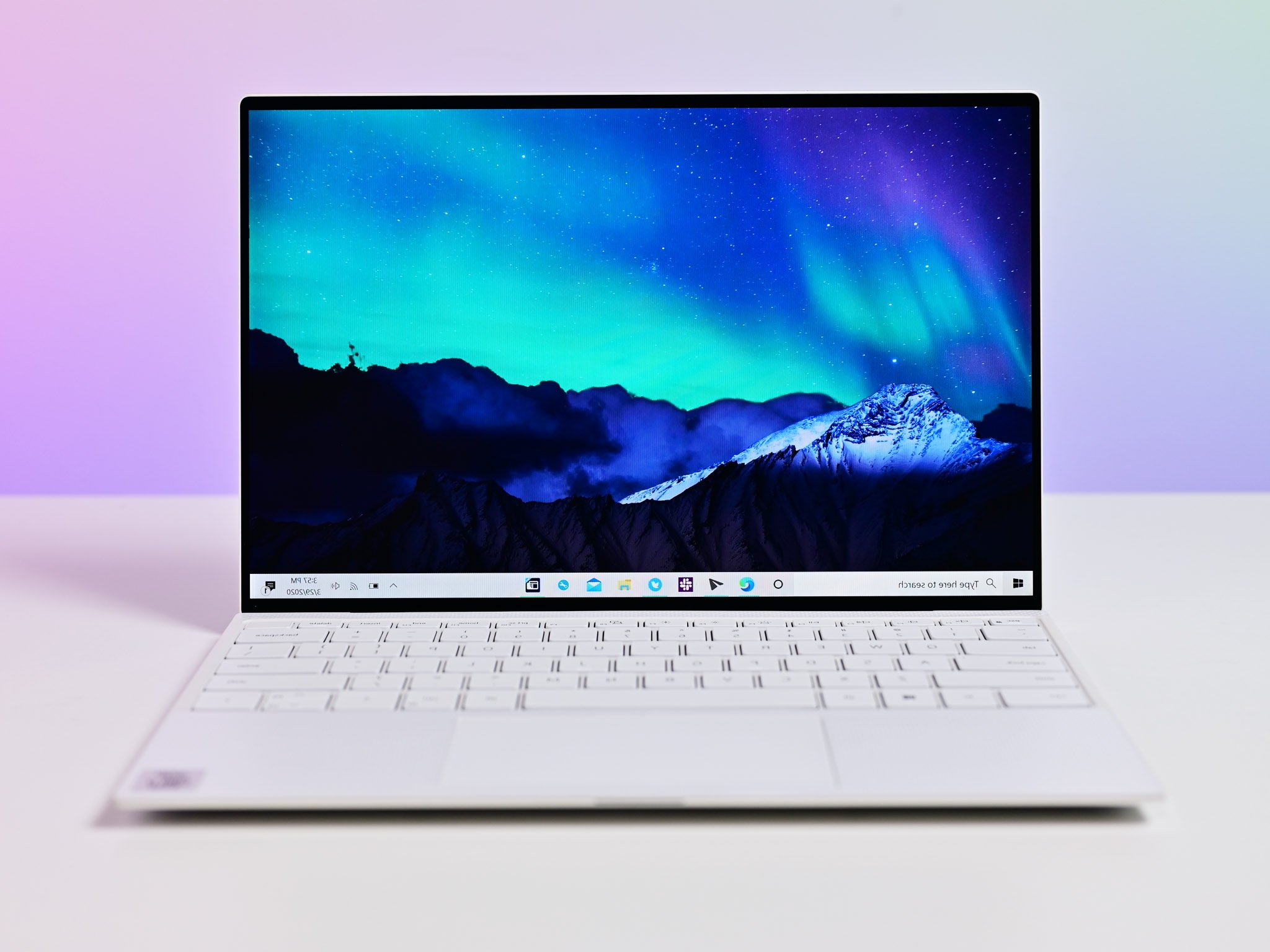
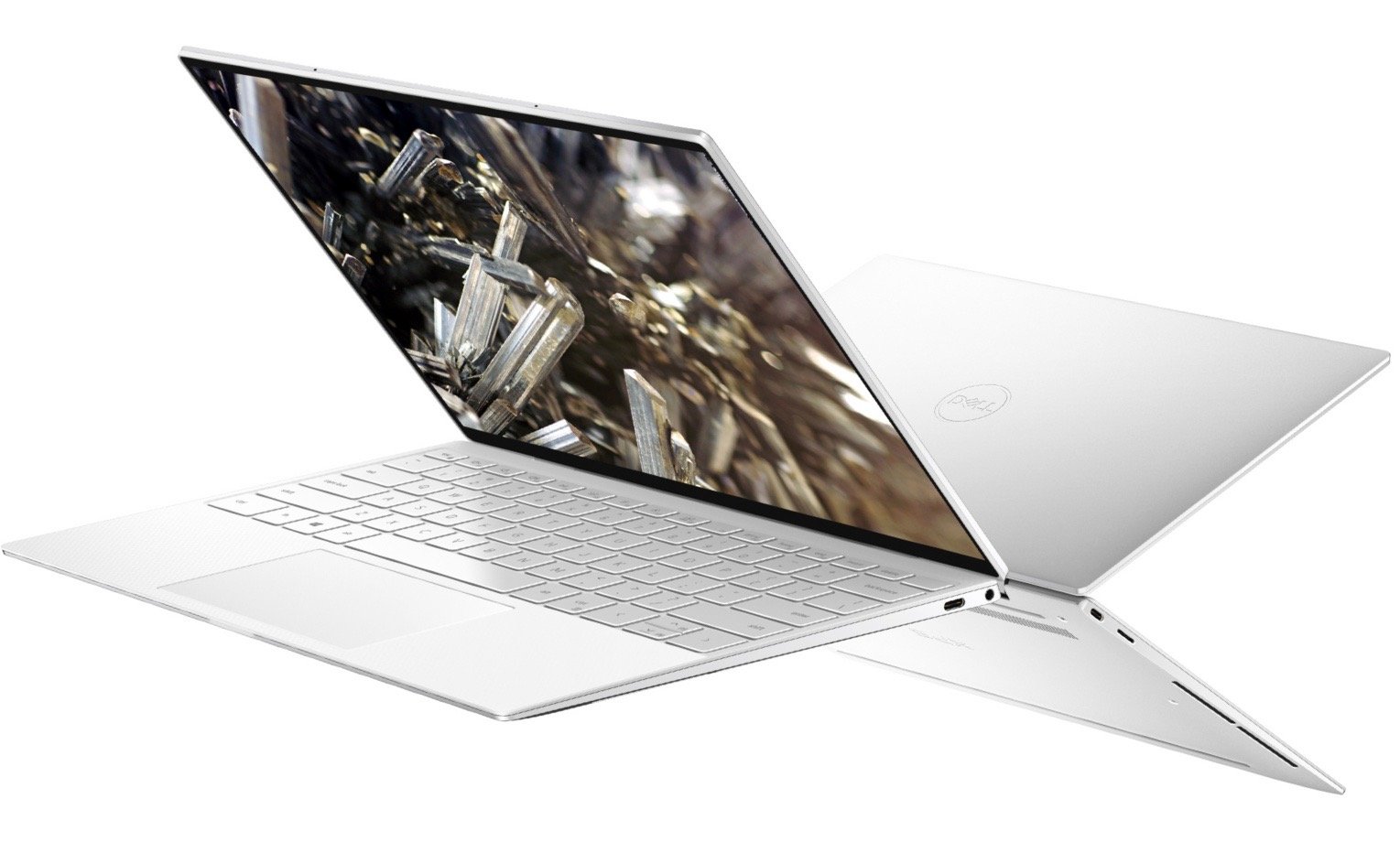
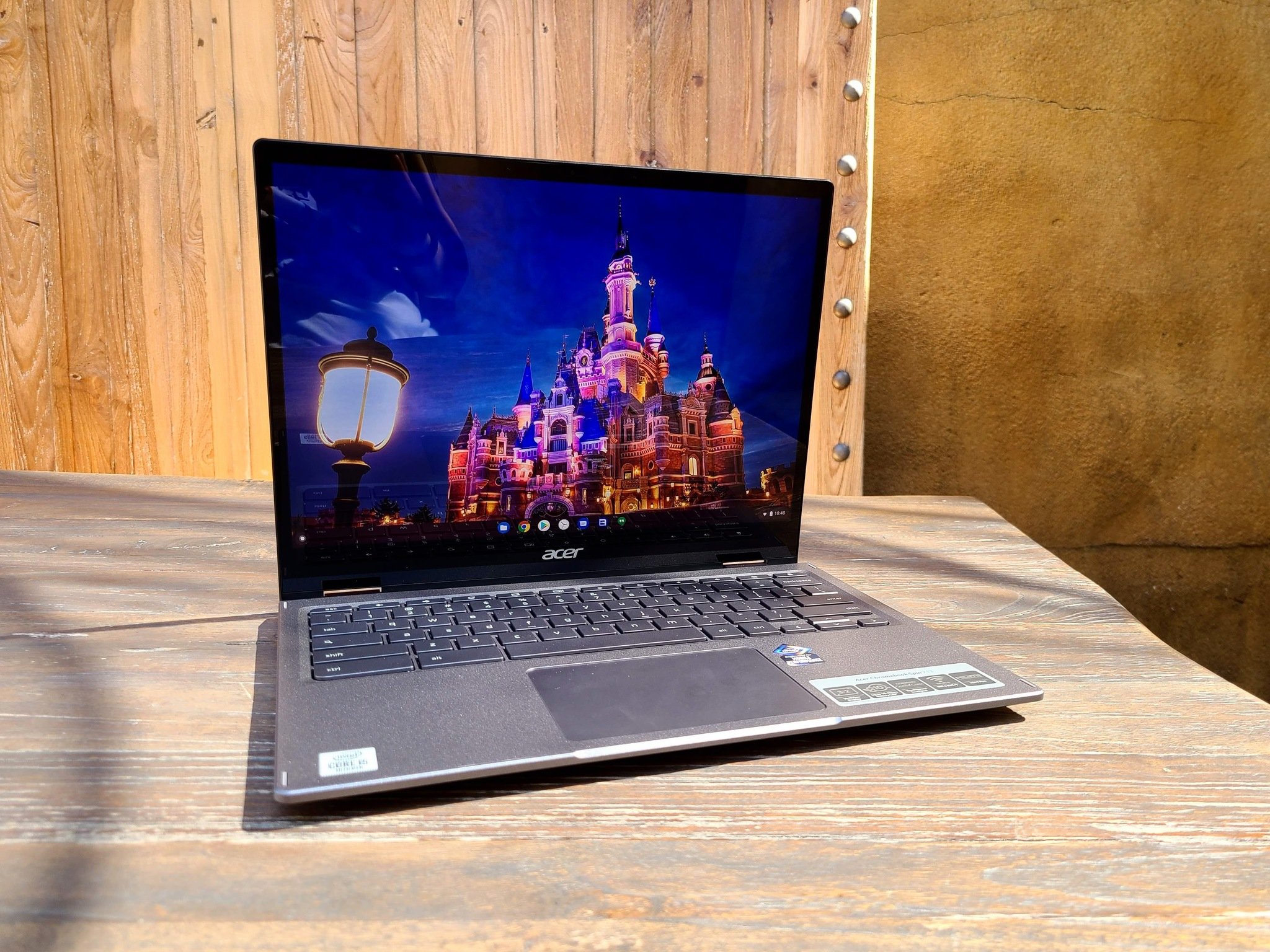

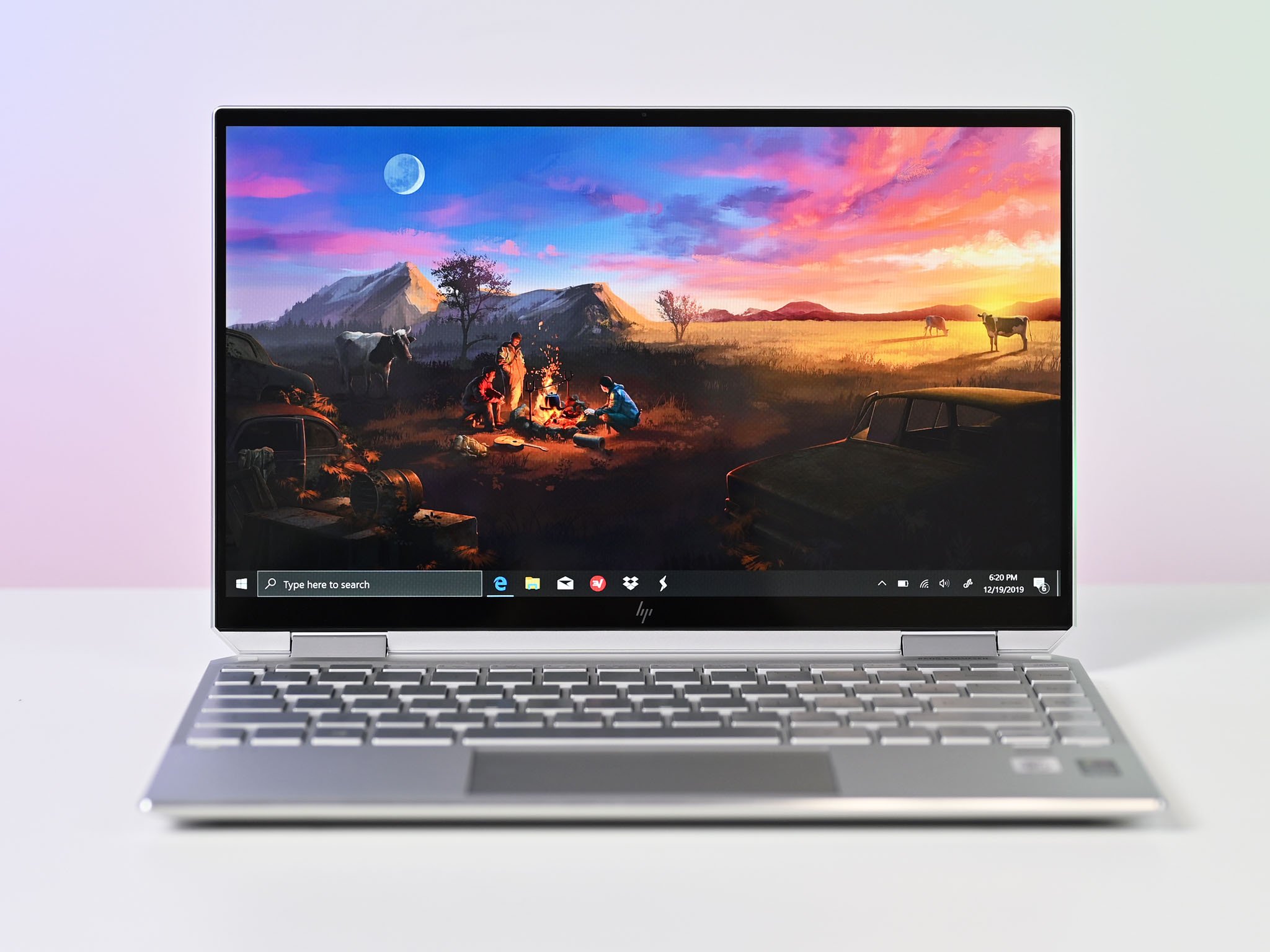
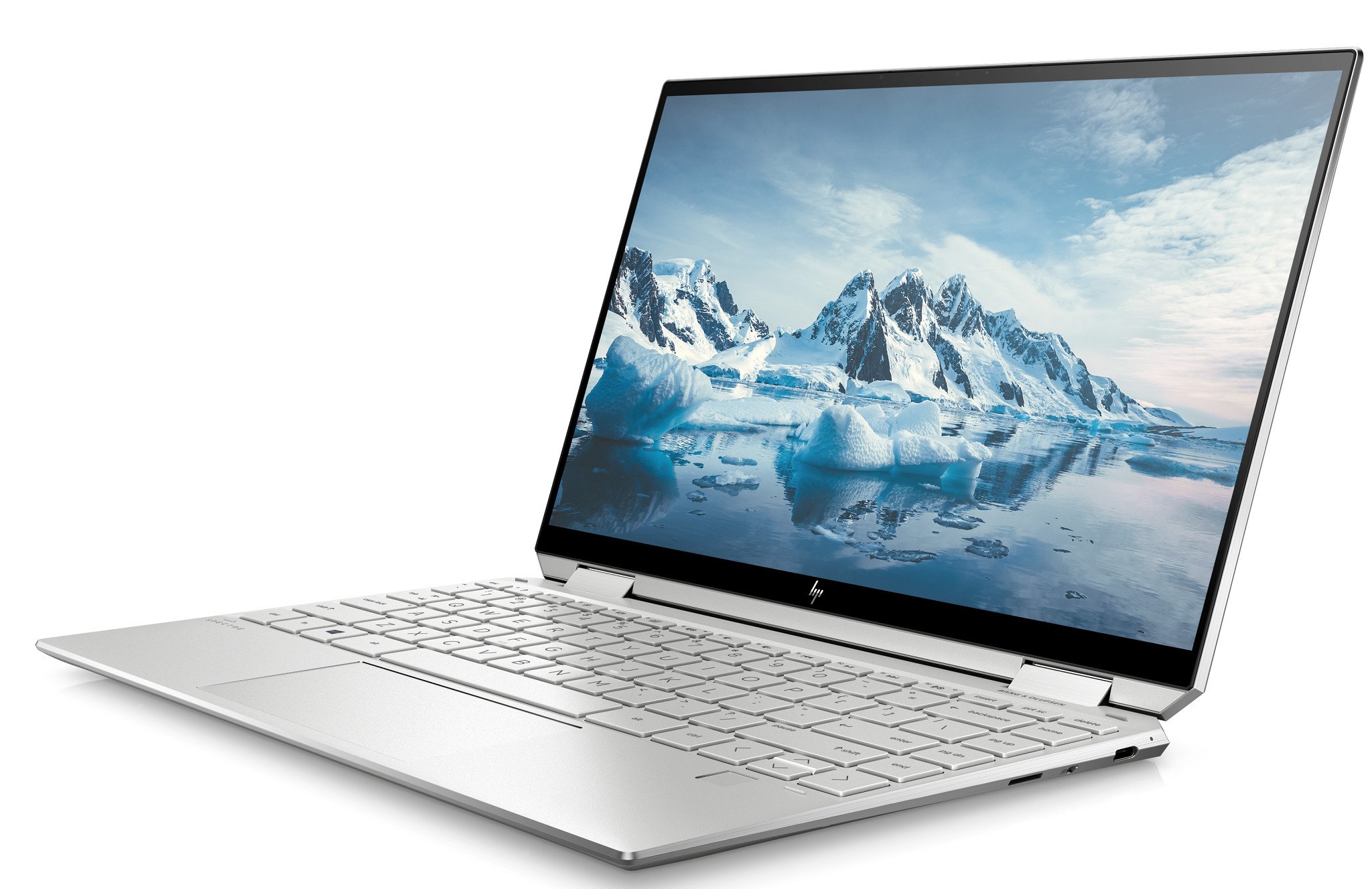
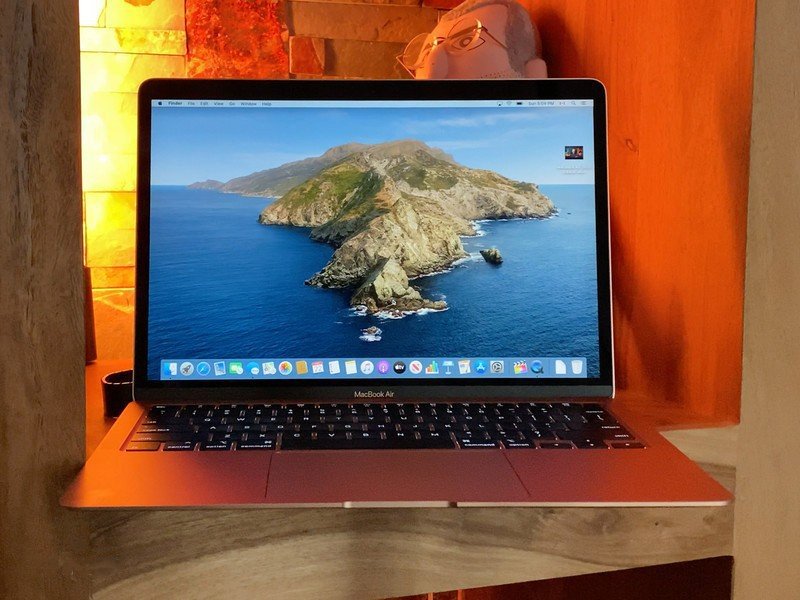
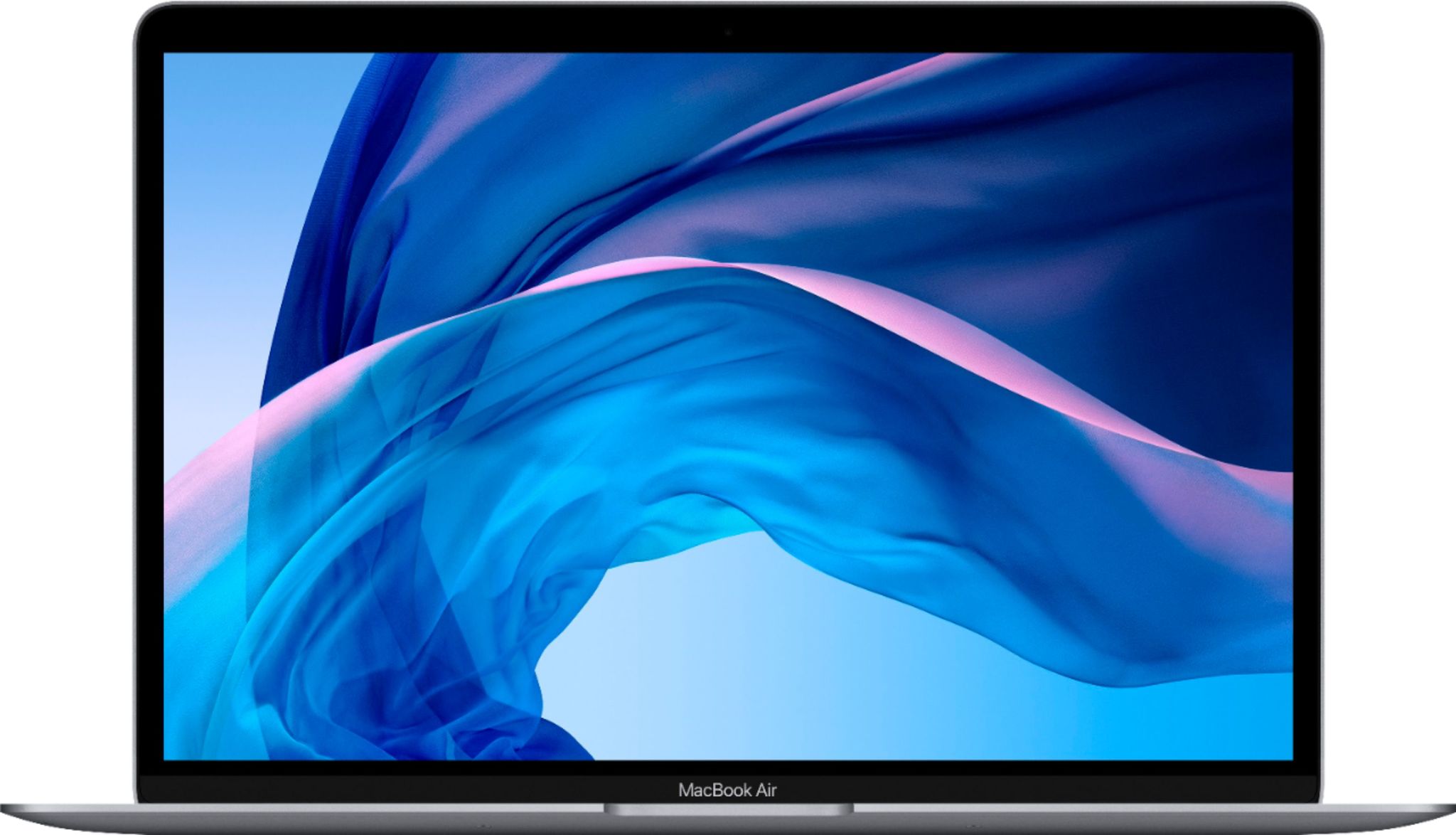



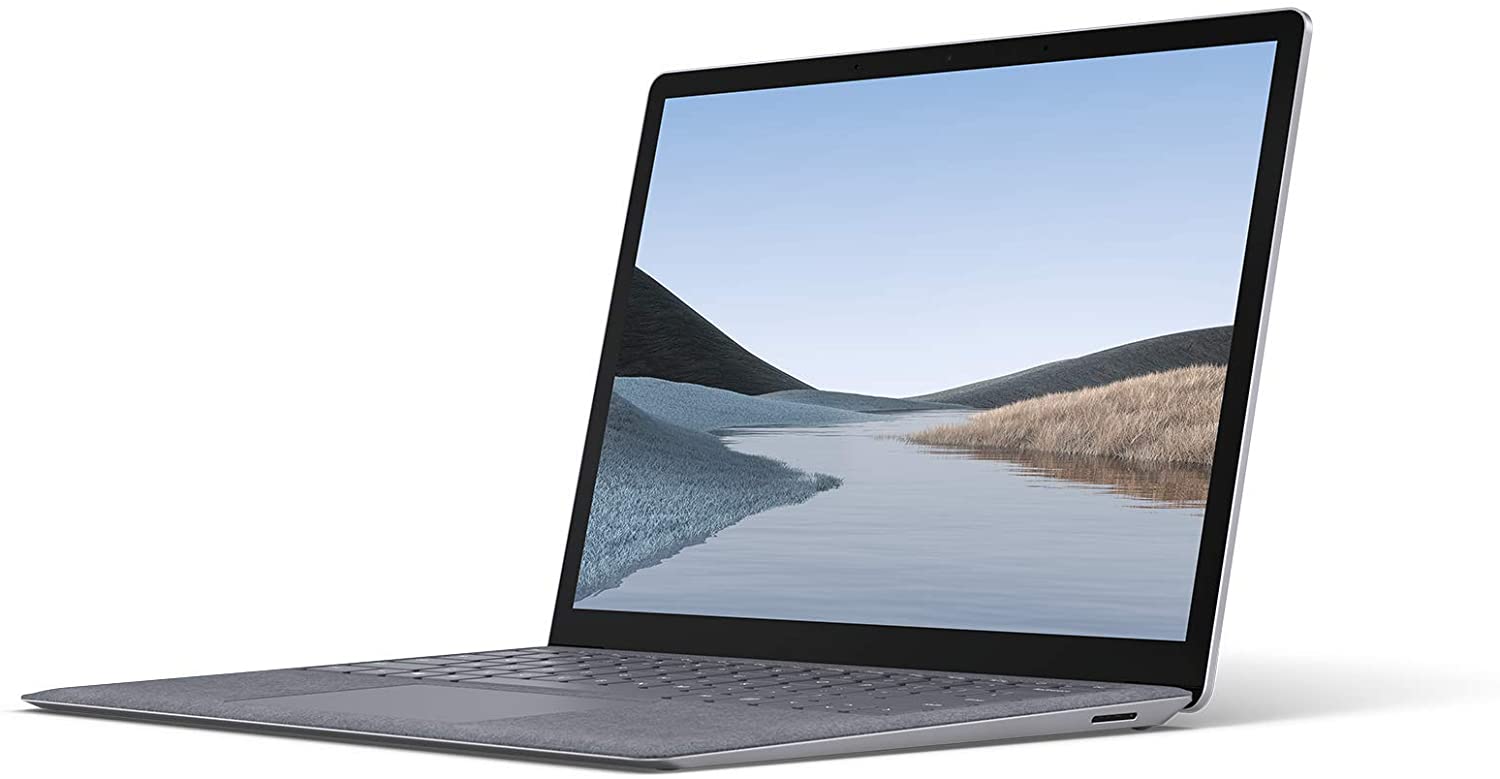
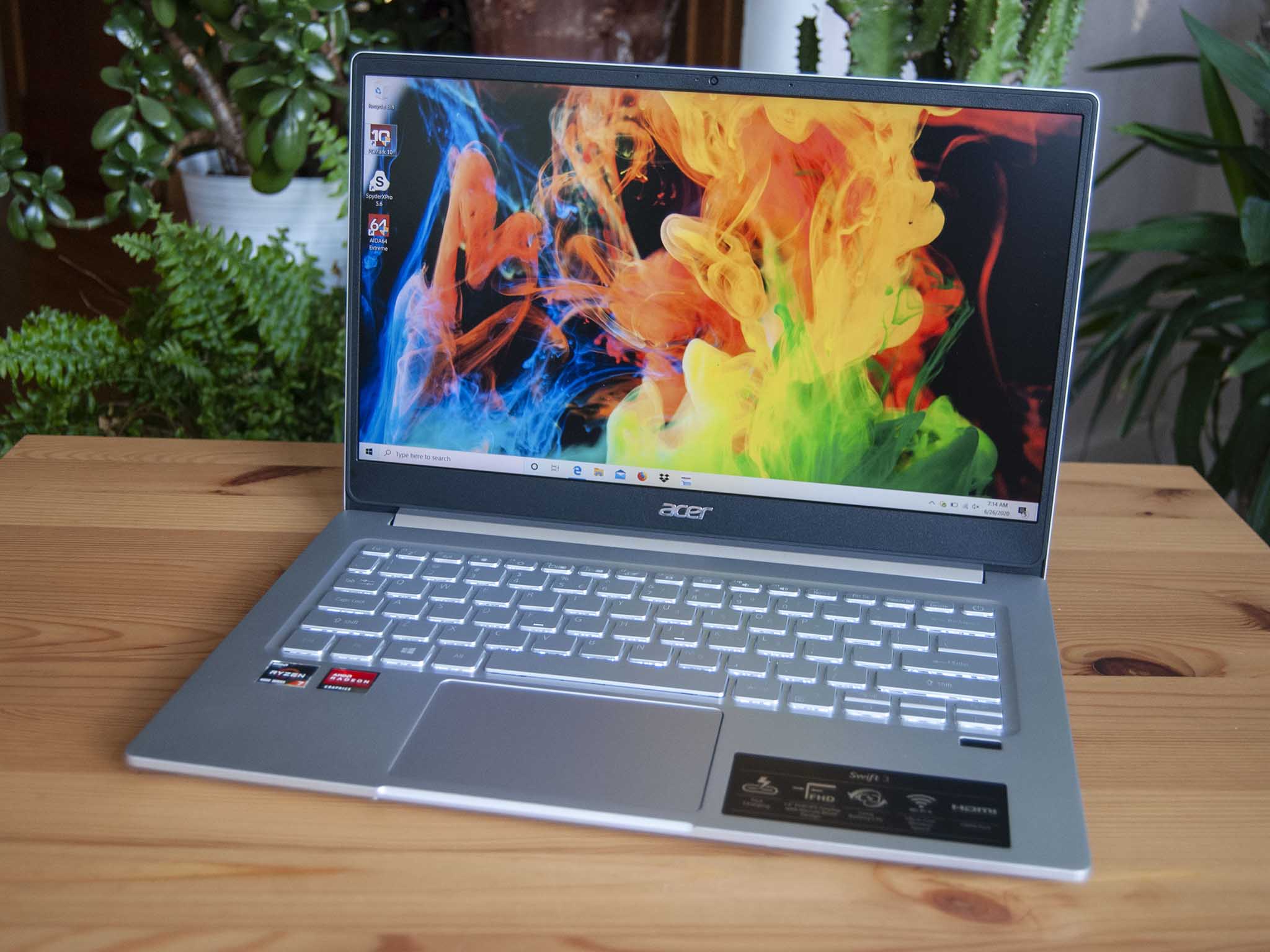
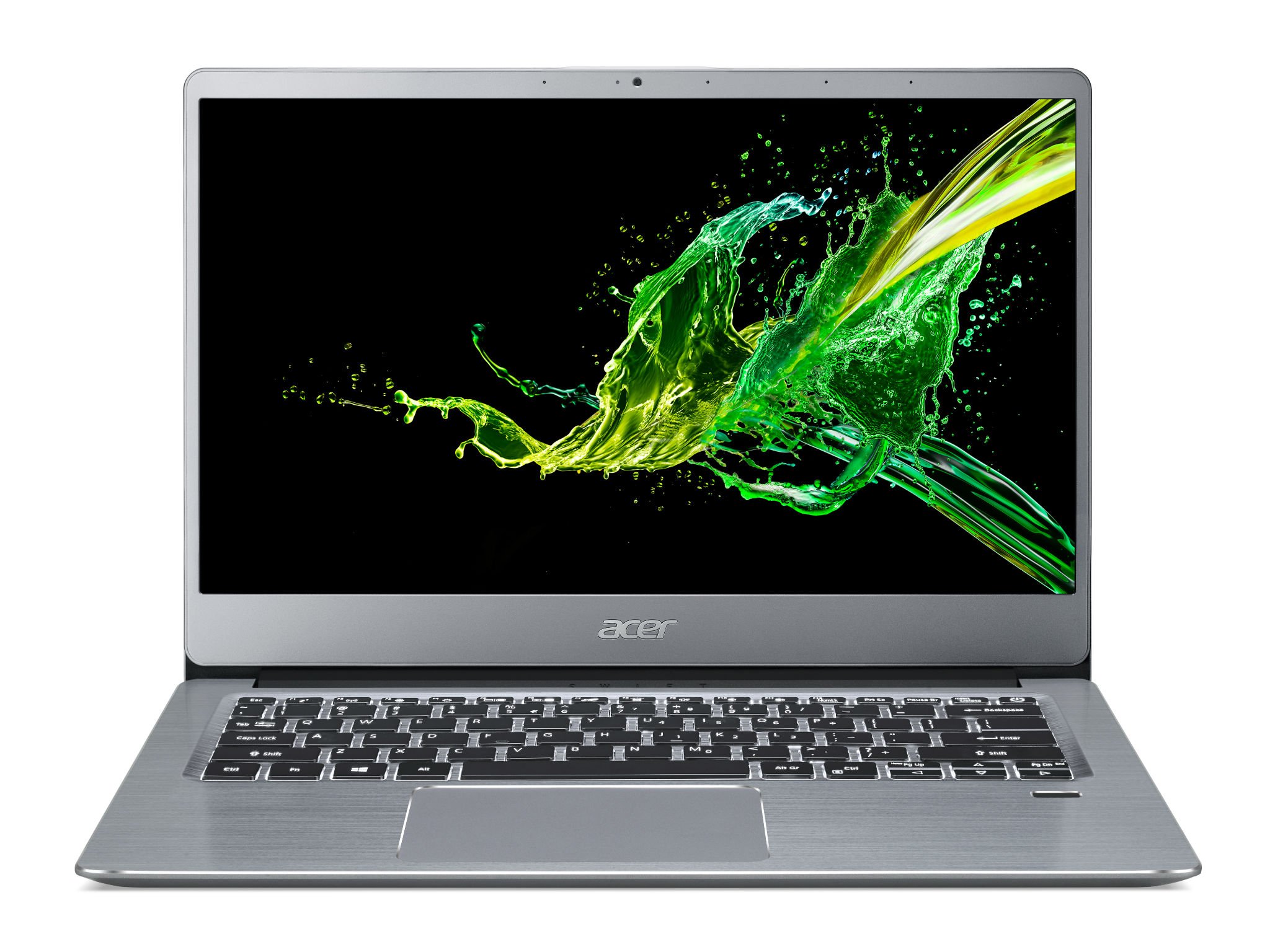

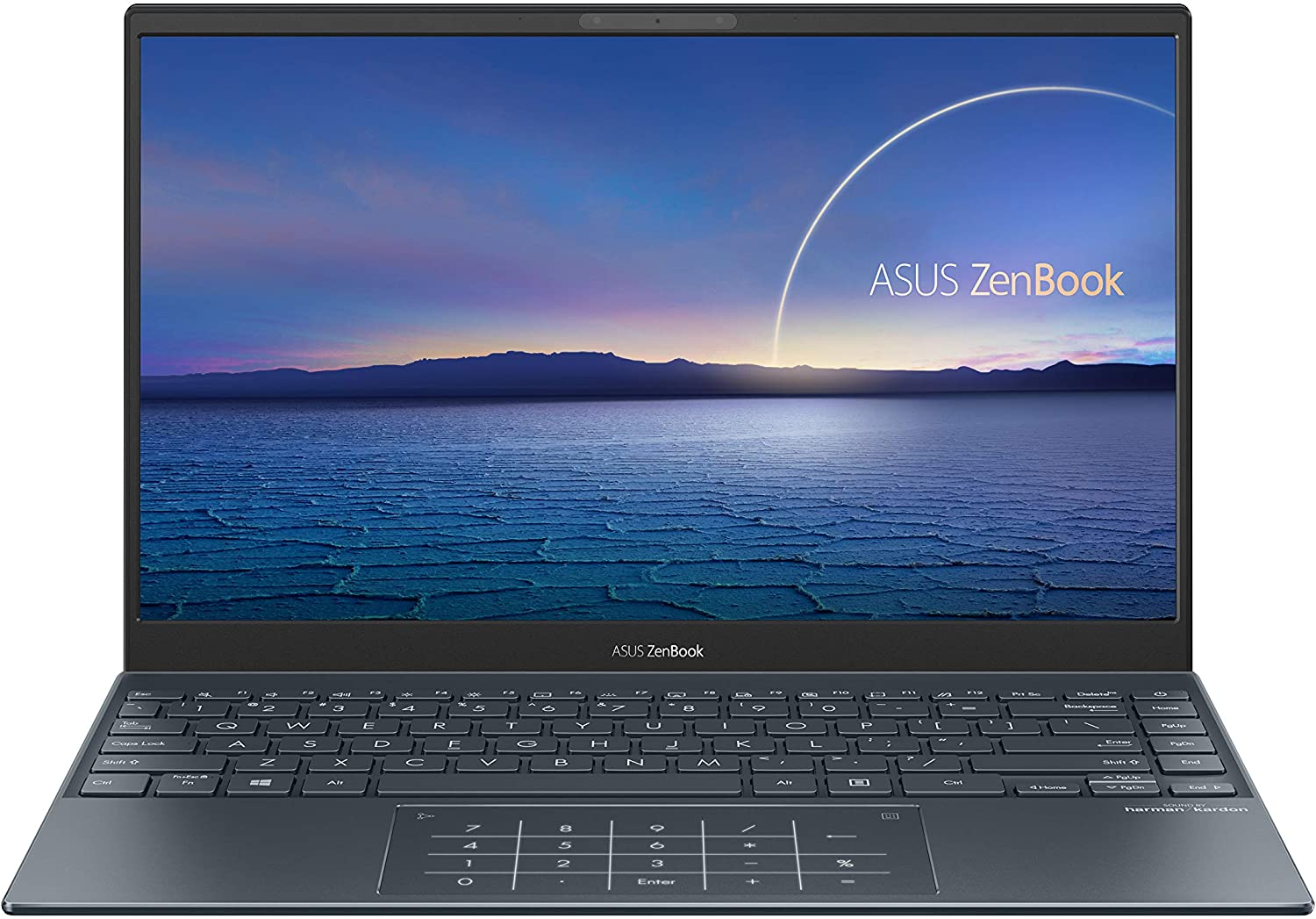
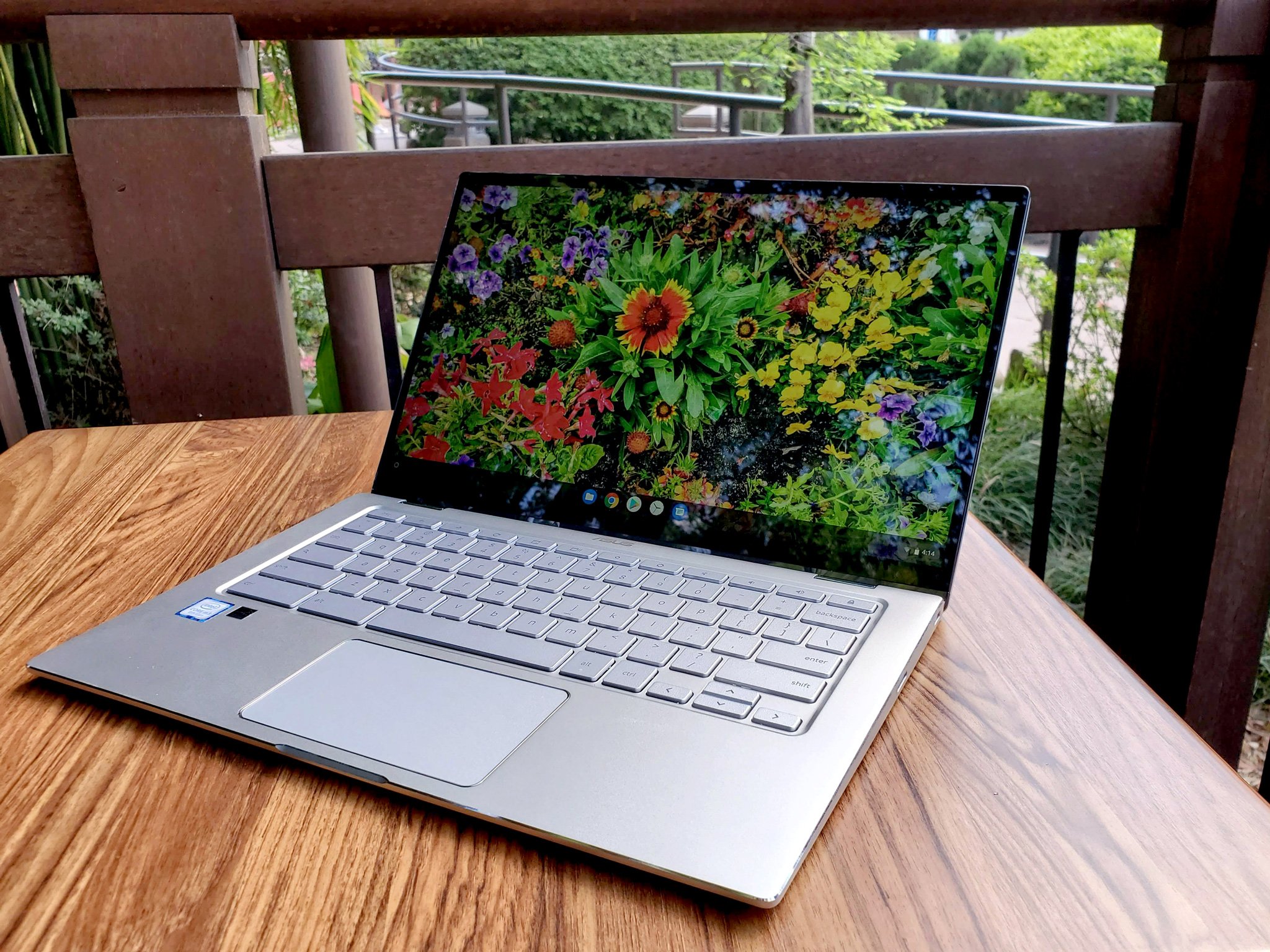
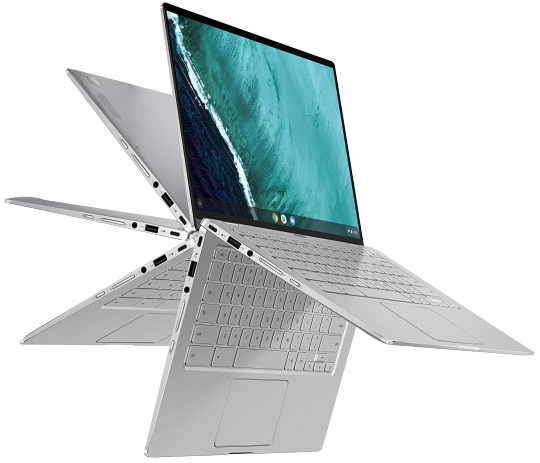
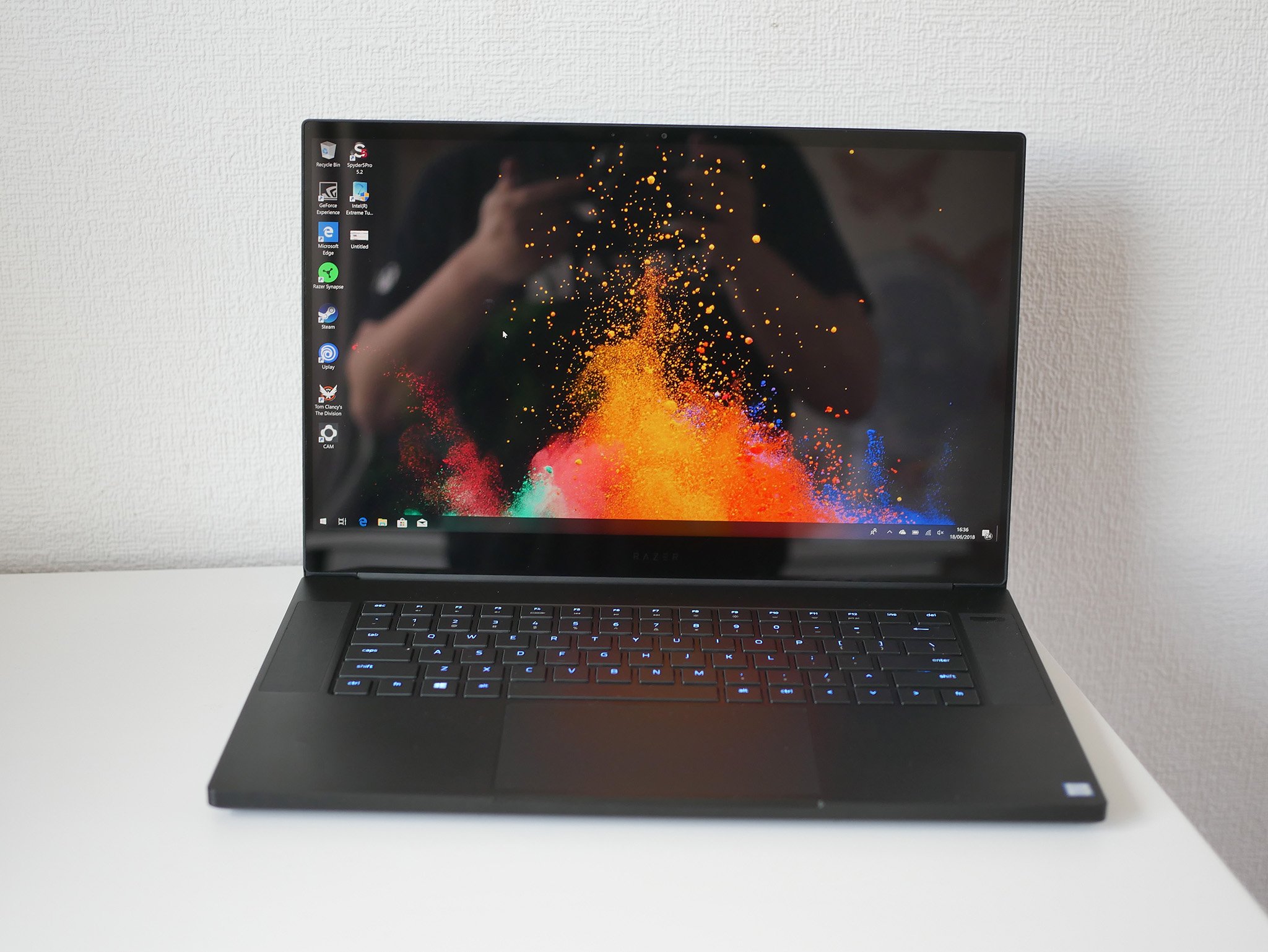
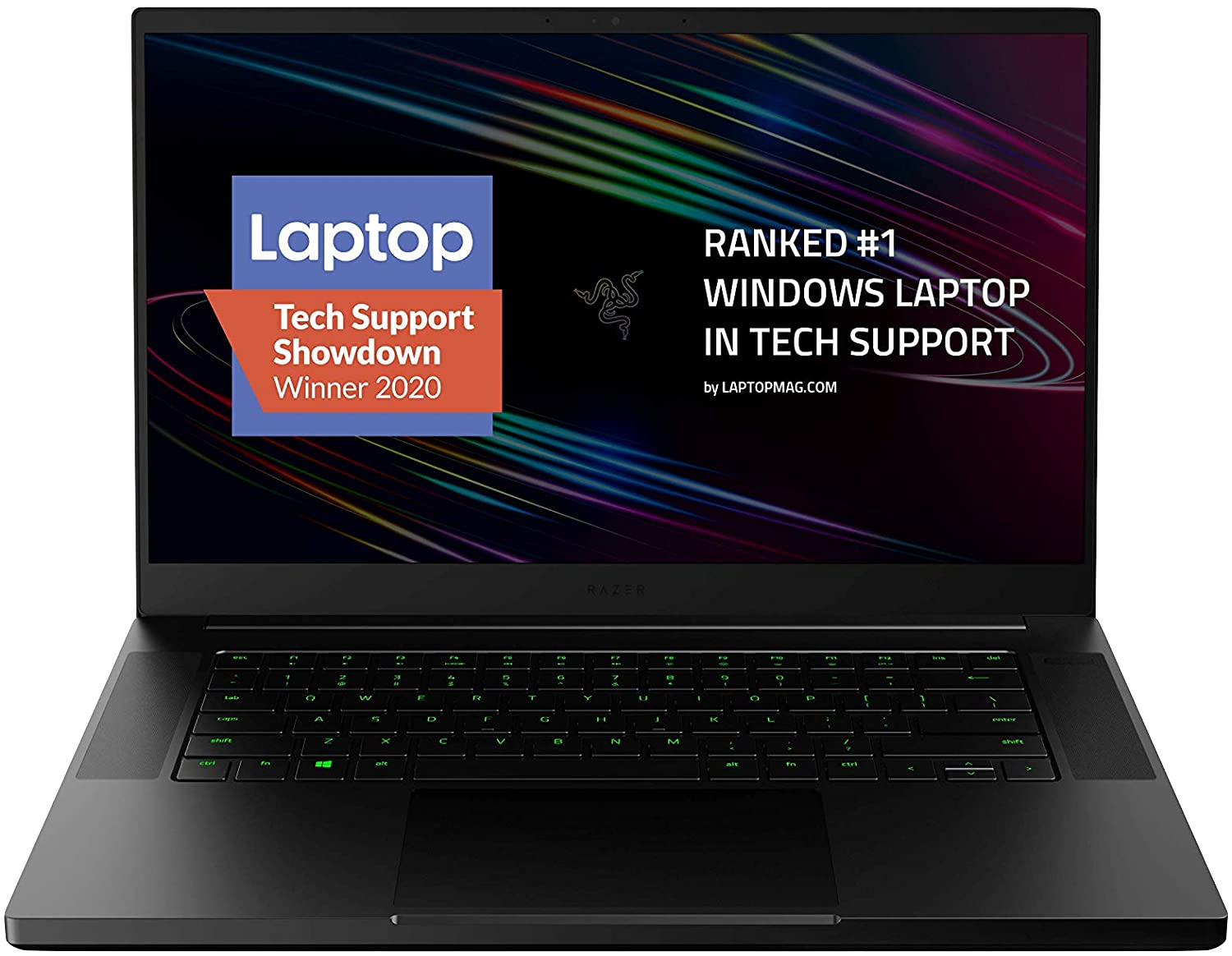
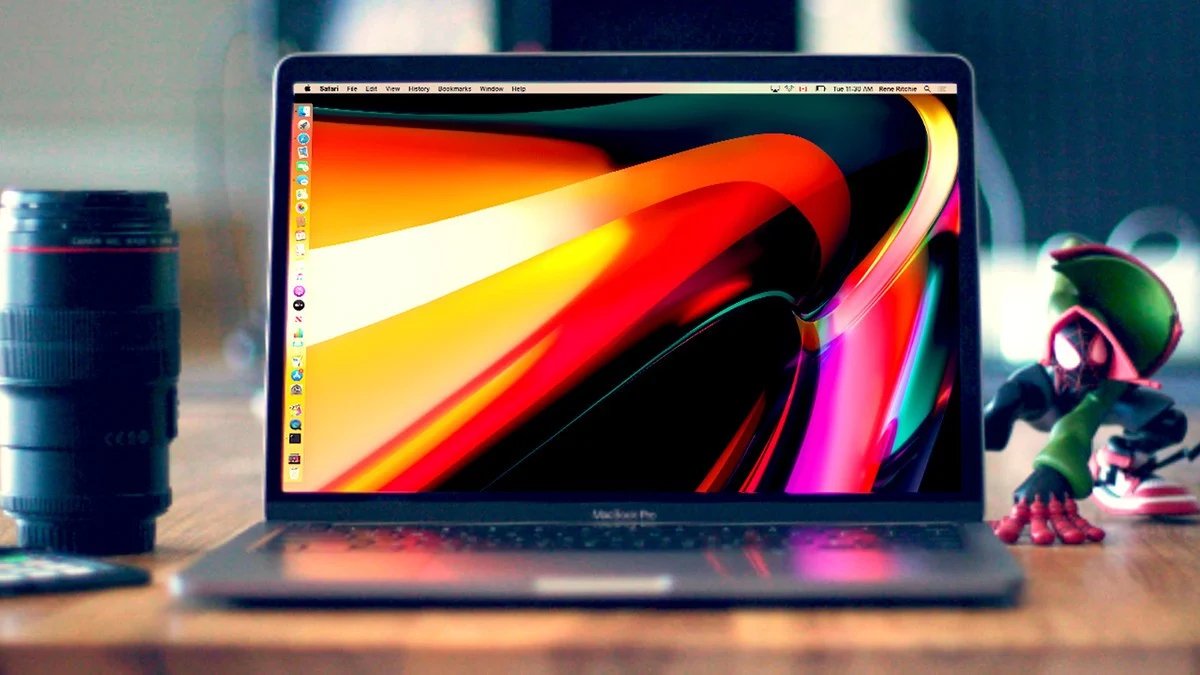
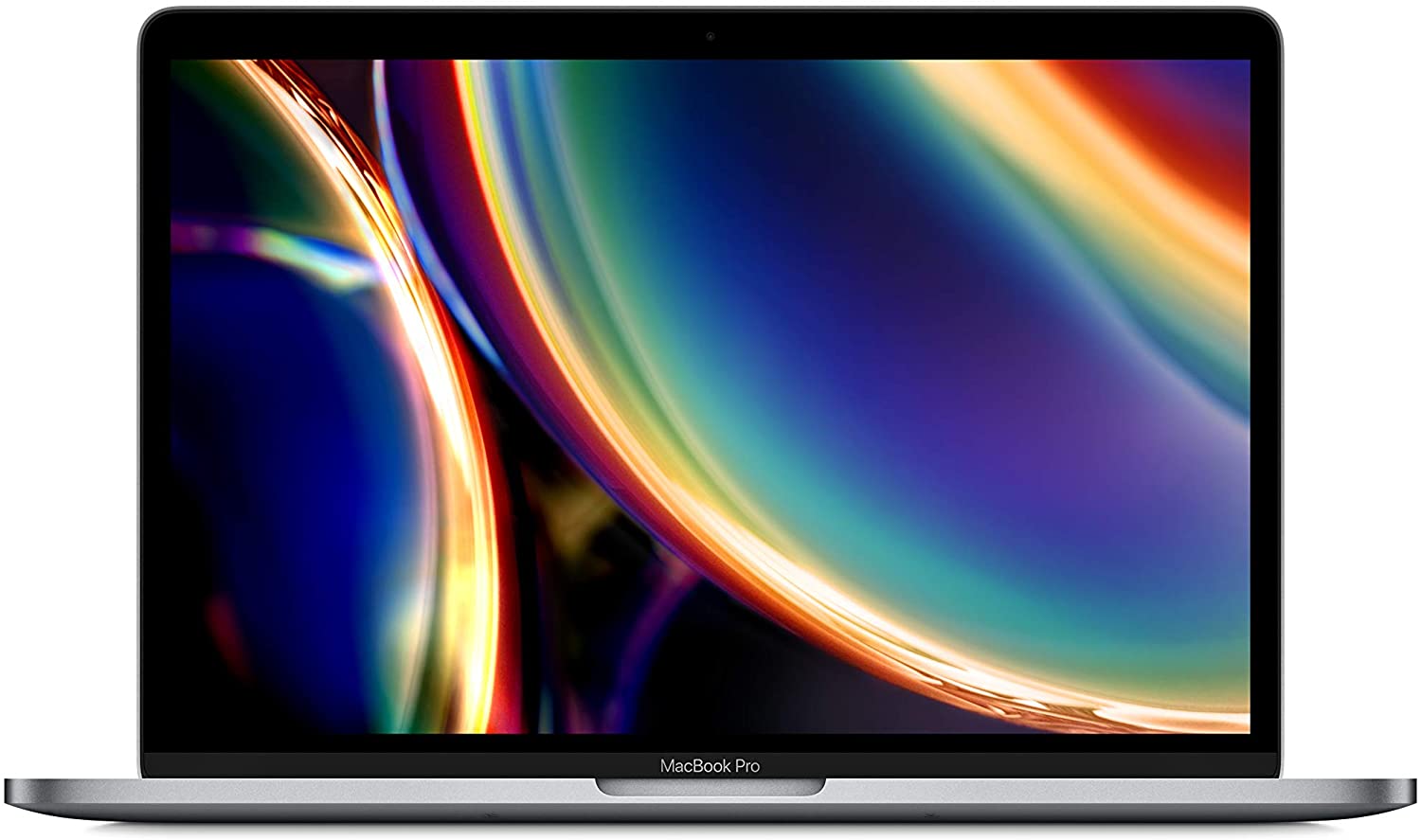

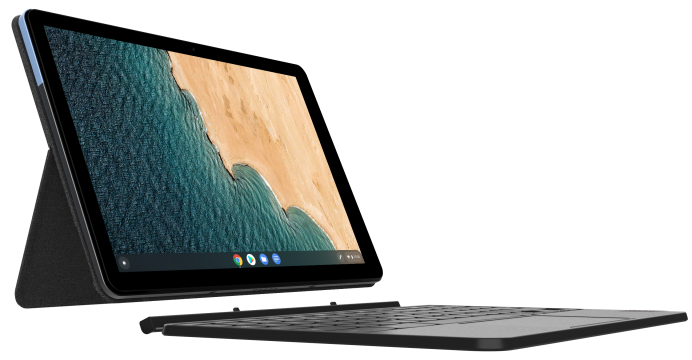
No comments: